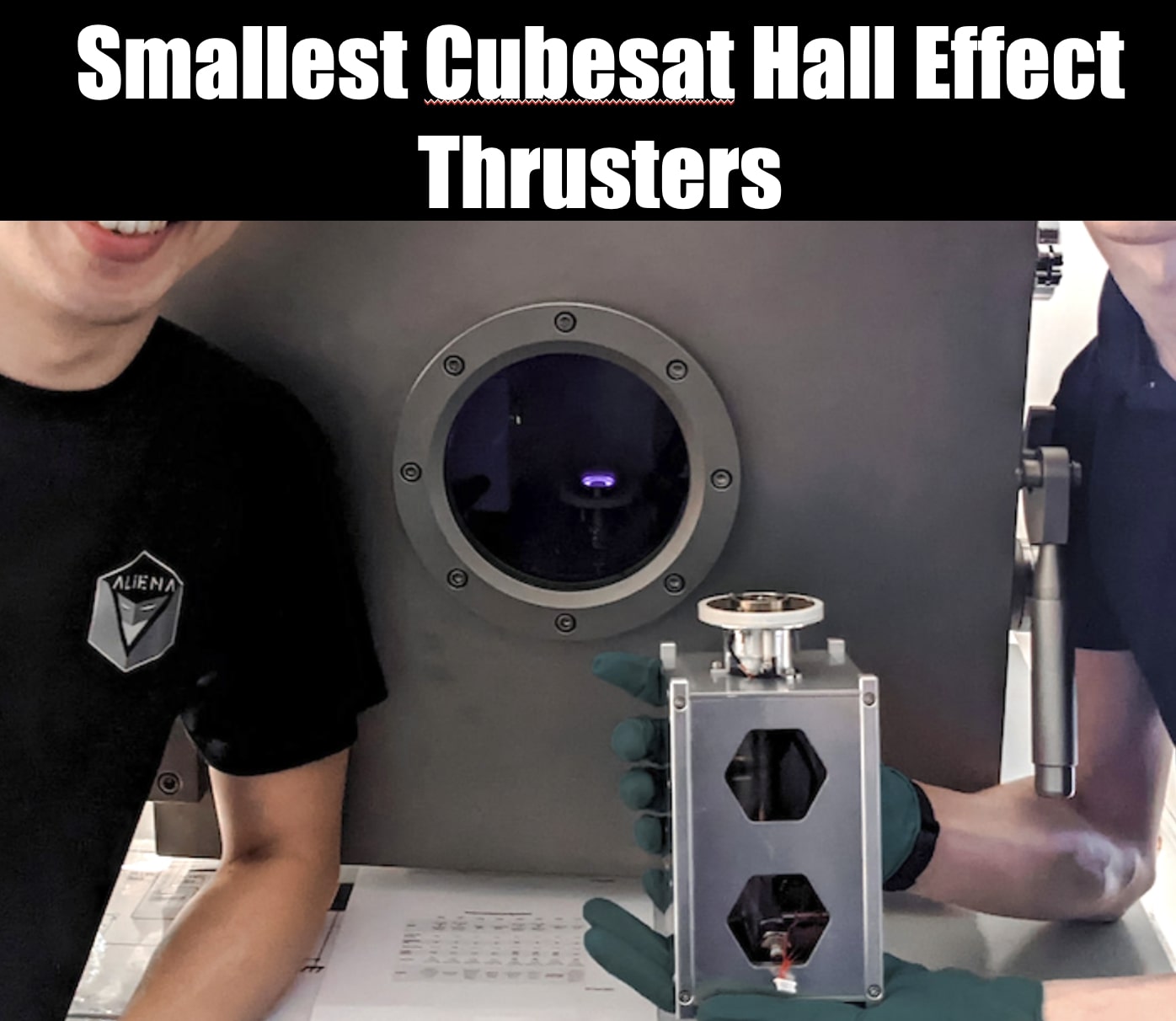The possibility of the controversial IVO Quantized Inertia drive on the Barry-1 satellite working has raised the question of could it be faked with a small Hall Effect Thruster ?
I looked at the smallest Hall thrusters. If the Barry-1 thrust is 2 millinewtons or less and lasts for a month or so then it could be a small Hall thruster pretending to be QI drive. It would use 20-50 watts, would need more solar and would need on board fuel. If the drive kept going for years, which it should without breaking down then it would be the QI drive.
SpaceX as the rideshare launcher would have inspected the payload. They will not launch black boxes. Engineering diagrams and system tests would be performed. DARPA would be validating what is happening on the orbital mission or they would not greenlight the funding. There are three or more other independent projects.
The smallest Hall effect thrusters are still a few kilograms in weight and can fit in to 3U cubesats
A Singapore company, Aliena, can make one that is 2 kilograms in weight and needs 20 watts to produce 0.25 millinewtons.
Exotrail makes one that is about 4 kilograms and uses 53 watts to make 2 millinewtons. Aliena has a similar class Hall Effect drive.
The IVO Quantized inertia drive is claiming 200 grams, 1 watt and 52 millinewtons.
If the results show more than 5 millinewtons then IVO would have a breakthrough in Hall Effect Thrusters.

In 2019, the ExoMG™ – nano can operate at 50W of power and lower whilst maintaining a high specific impulse (800s) and an especially high thrust (1.5mN expected) due to Exotrail’s unique innovations on the magnetic, thermic and mechanical design. The test results actually showed an even higher than expected thrust of more than 2 milliNewtons at 53W of discharge. classic Hall thruster mostly operate at a power higher than 1kW.
The highest power Hall-effect thruster in development (as of 2021) is the University of Michigan’s 100 kW X3 Nested Channel Hall Thruster. The thruster is approximately 80 cm in diameter and weighs 230 kg, and has demonstrated a thrust of 5.4 N.
Other high power thrusters include NASA’s 40 kW Advanced Electric Propulsion System (AEPS), meant to propel large-scale science missions and cargo transportation in deep space.
SpaceX developed a new thruster that used argon as propellant for their Starlink V2 mini. The new thruster had 2.4 times the thrust and 1.5 times the specific impulse as SpaceX’s previous thruster that used krypton. Argon is approximately 100 times less expensive than Krypton and 1000 times less expensive than Xenon.

The electrical power level and xenon fuel feed can be adjusted to throttle each engine up or down in thrust. The engines are thrifty with fuel, using only about 3.25 milligrams of xenon per second (about 10 ounces over 24 hours) at maximum 50 millinewtons of thrust. The Dawn spacecraft carried 425 kilograms (937 pounds) of xenon propellant at launch.
If there was a 50 times lower thrust, 1 millinewtons and it fired for 25 days, then a Hall thruster would need 5 ounces of fuel. There would need to be a fuel tank.

Brian Wang is a Futurist Thought Leader and a popular Science blogger with 1 million readers per month. His blog Nextbigfuture.com is ranked #1 Science News Blog. It covers many disruptive technology and trends including Space, Robotics, Artificial Intelligence, Medicine, Anti-aging Biotechnology, and Nanotechnology.
Known for identifying cutting edge technologies, he is currently a Co-Founder of a startup and fundraiser for high potential early-stage companies. He is the Head of Research for Allocations for deep technology investments and an Angel Investor at Space Angels.
A frequent speaker at corporations, he has been a TEDx speaker, a Singularity University speaker and guest at numerous interviews for radio and podcasts. He is open to public speaking and advising engagements.


53mN drive is not in barry-1. The ceo said it has two drives a 0.25mN and a 0.65mN drive. Check out his twitter replies from december.
At the very least….we won’t have this drag on for very long unlike Rossi et al